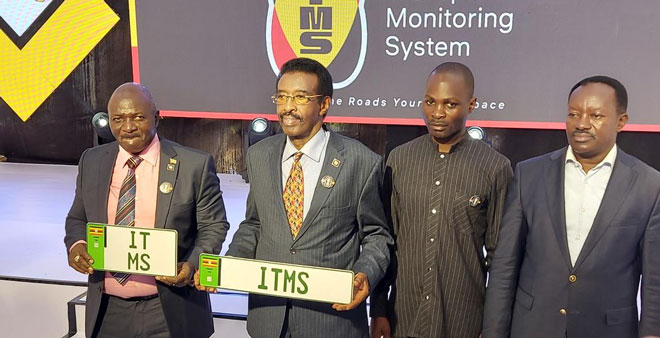Three months after the launch of Uganda’s new digital number plates, questions are still being raised about their effectiveness, particularly regarding the tracking features embedded in the system. While the government has hailed the new system as a breakthrough in vehicle identification and security, many Ugandans remain uncertain about how it actually works.
How the Digital Number Plates Work
The digital number plates, launched under the Intelligent Transport Monitoring System (ITMS), were designed to enhance road safety, prevent crime, and streamline vehicle tracking. Each plate is equipped with security features such as:
-
QR Code Authentication: The plates come with a unique QR code containing a serial number, a country identifier (UG for Uganda), and a verification number. Law enforcement officers can scan this code using specialized devices to verify the authenticity of the plate and confirm if the vehicle is registered in the system.
-
GPS Tracking: The plates have a built-in GPS tracker that allows authorities to monitor vehicle movements in real time. This feature is intended to help track stolen cars and those involved in criminal activities.
-
Counterfeit Prevention: The system ensures that only government-authorized plates are in circulation. The verification number helps detect counterfeit plates and prevents fraud.

Challenges and Public Concerns
Despite the government’s assurances about the benefits of the new plates, motorists and some law enforcement officers have encountered difficulties. The most common concerns include:
-
QR Code Scanning Issues: Many motorists have reported that the QR codes on their plates do not scan properly or fail to reflect the correct information. This has led to confusion and delays, especially at police checkpoints.
-
Unclear GPS Tracking Functionality: While authorities insist that the tracking system is operational, vehicle owners are uncertain about how it actually works. There are no clear guidelines on when and how law enforcement can track a vehicle, raising concerns over privacy and misuse of data.
-
System Downtime and Technical Glitches: Some reports suggest that the system experiences occasional technical failures, making it difficult for officers to verify vehicle details in real time.
Government Response and Next Steps
In response to these concerns, the Uganda Police and Ministry of Works and Transport have assured the public that the system is still undergoing improvements. They have urged motorists to be patient as updates are made to enhance the accuracy and reliability of the system.
Officials have also promised to train more officers on how to properly scan and verify QR codes to reduce errors during vehicle inspections. Meanwhile, the government is working on public awareness campaigns to educate Ugandans about the importance of the new system and how it functions.

As more vehicles are fitted with the digital plates, authorities will need to ensure that the tracking and verification features work as intended. Otherwise, the system may struggle to gain the trust of the public, who are already questioning whether the expensive initiative is truly effective in improving road security and crime prevention.








